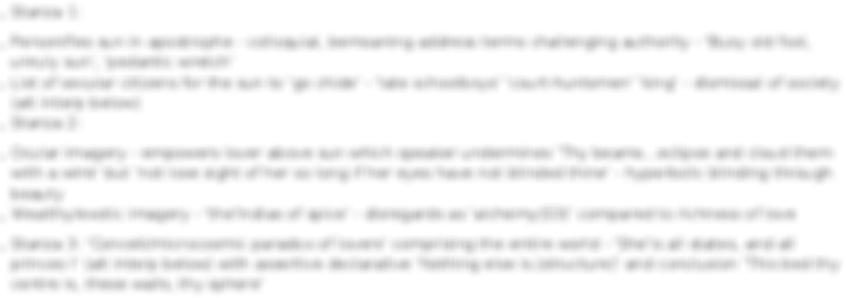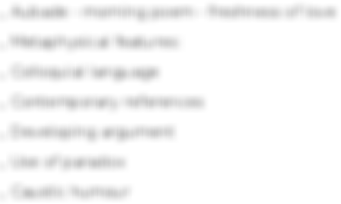The Sun Rising Analysis
- Created by: xchipscurrysaucex
- Created on: 01-05-15 13:29
Date/period |
Event(s) |
|
|
Overview |

|
|
|
Language |

|
|
|
Structure |

|
|
|
Form |

|
|
|
Context |

|
|
|
Alternative interpretations |

|
|

|
Comments
Report